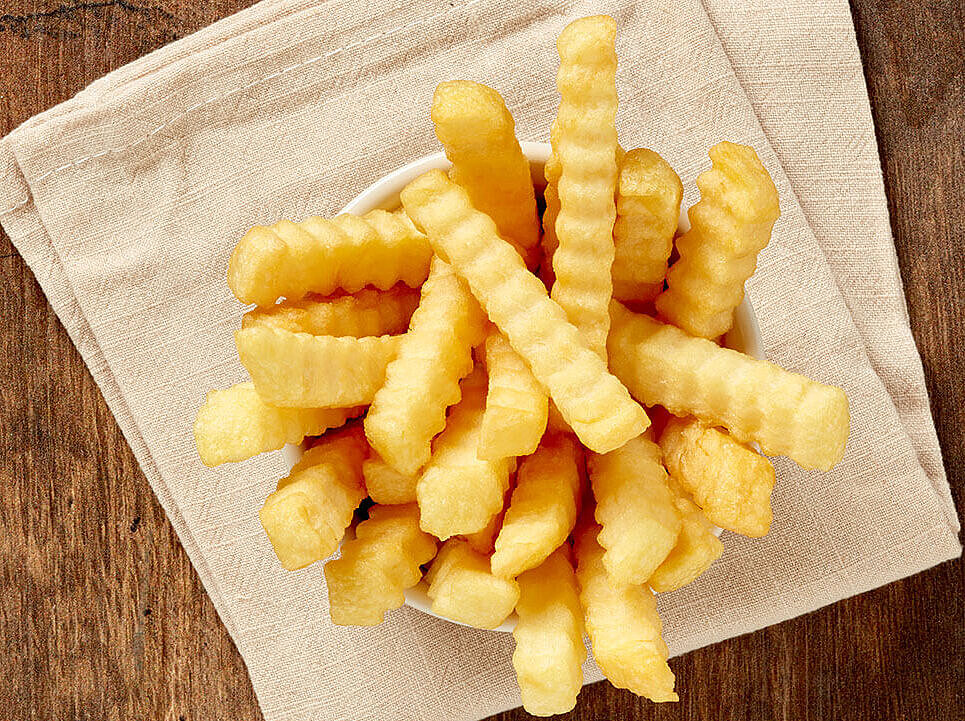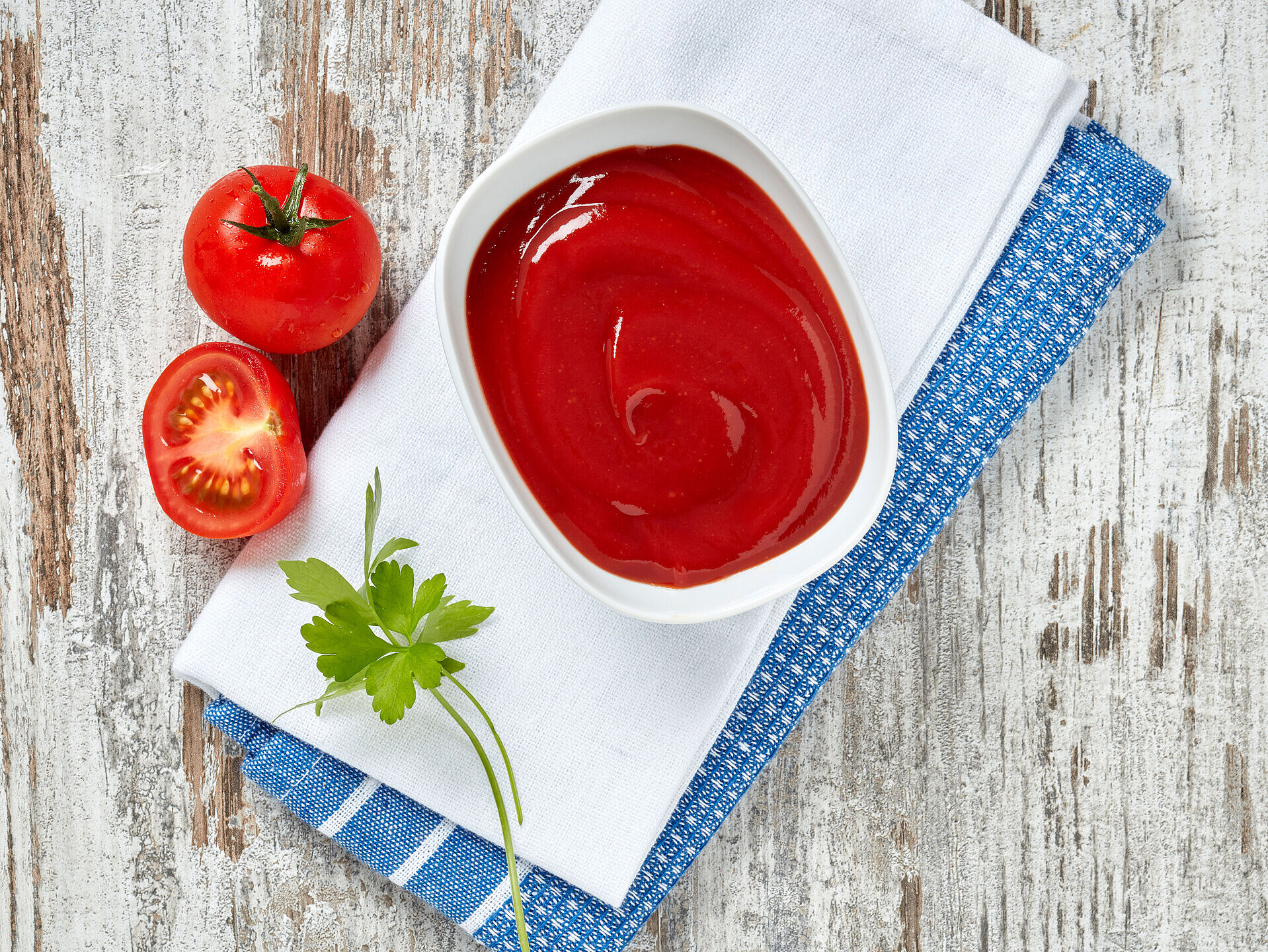Information about the Acrylamide Regulation
The Regulation (EU) 2017/2158 establishing mitigation measures and benchmark levels for the reduction of the presence of acrylamide in food (Acrylamide Regulation), was published on the 20th of November 2017. It entered into force on the 20th day after the publication and will be applied in all Member States of the EU since the 11th of April 2018.
Acrylamide is formed in food that contains the natural amino acids asparagine and reducing sugar such as, e.g. glucose or fructose if these are heated to temperatures higher than 120 °C. Typical foods, during the production of which acrylamide is formed are potato crisps, coffee, snack items, bread and pastries. Our French fries and frozen potato specialities are pre-deep-fried at temperatures of more than 120 °C. Hence, acrylamide can form both during their manufacture as well.
The acrylamide topic isn’t new. We have always aligned our processes to the state-of-the-art technology since 2002. As such, the majority of minimisation measures described in the Acrylamide Regulation, which have to be deployed by producers, has already been practised by us for a long time.
We have implemented the following measures:
- Selection of raw materials: We use potato varieties with a low natural content of reducing sugars for our French fries and frozen potato specialities.
- Storage: For the production of French fries and frozen potato specialities, we store our potatoes in an appropriate temperature range of more than 6 °C and prevent premature sprouting of the ware potatoes by means of appropriate measures. Thereby, the conversion of starch to sugar, which could result in increased acrylamide concentrations, is suppressed.
- Raw material checks: If required, the controls are carried out for every incoming batch via the baking colour, so as to verify the suitability for manufacturing French fries. The baking colour provides an indication regarding the anticipated acrylamide concentration. The darker the baking colour, the higher the anticipated acrylamide concentration. This way, we are able to refuse receipt of certain potato deliveries in a targeted manner.
- Reduction of the sugar content: We blanch the potatoes prior to the deep-frying process. This way, the sugar is washed out of the potatoes. Additionally, this step can reduce the throughput time in the deep fat fryer. These measures favour reduced acrylamide concentrations.
- Information and dedication: We acquire information on an ongoing basis regarding the latest insights in the field of acrylamide research and are actively involved within the framework of our association activities at a German-wide and European level, where we participate in corresponding programmes.
- Information to the end consumers: We provide precise instructions regarding the preparation of our products (see below). The main amount of acrylamide is created during the final preparation by the user. By complying with a few rules, acrylamide formation can be reduced.
As a result of the measures we deploy with the purpose of reducing the formation of acrylamide, we can confirm that our fresh and frozen, pre-fried French fry items do not exceed the mentioned reference value of 500 µg/kg prescribed in the Regulation for prepared French fries, to the extent that the applicable minimisation measures as described in Attachment II Part A of the Regulation, are complied with by food companies within the meaning of Article 2 Paragraph 2.
In the future, the cooking instructions will be stated on the product packaging or can be viewed here. The wording is as follows:
Recommendations for the end consumers in accordance with Attachment I Part B of the Regulation (EU) 2017/2158 regarding the determination of risk minimisation measures and benchmarks for the reduction of the acrylamide content in foods:
- Please comply with the following instructions for baking, frying or deep-frying
- Please ensure that you avoid excessive baking, frying or deep-frying.
- Always prepare the products so they exhibit a golden-yellow colour and do not become over-browned.
- When preparing smaller portions, please reduce the cooking time appropriately in order to avoid over-browning.
- When preparing food in a deep-fat fryer, select a fat temperature range between 160 °C and 175 °C.
- When preparing food in a deep-fat fryer, ensure that the frying basket is not overfilled. Only make the frying basket half full to prevent excessive absorption of oil over a longer frying time.
- When preparing food in the oven, select a fat temperature range between 180 °C and 200 °C. When the fan is on, the temperature can be reduced.
- When preparing food in the oven, please note that the oven should be preheated to the right temperature in accordance with the packaging instructions and in accordance with the product specifications and local requirements.
- When preparing food in the oven, please note that the products should be turned after ten minutes or after half of the stated baking time.
- More information can be found on the Internet at the following website: http://goodfries.eu
Wernsing – for good food
Varied and above all: good - that's how food is supposed to be. And that is exactly how our food products are, which we produce for 60 years. Wernsing offers a fine selection of high-quality food in many categories: from potato products to dips and sauces to antipasti, bread spreads, desserts, dressings, marinades, pasta and piquant snacks, salads or soups and stews. You should try them!


